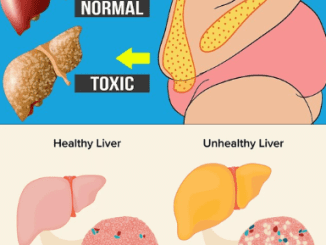
Dark patches, melasma, and uneven skin tone can feel like an uphill battle. They don’t just fade overnight, and the frustration often leads many people to grab the first skin-lightening cream they see on the shelf. But here’s the truth: patience, consistency, and the right ingredients make all the difference. Instead of relying on harsh chemicals that can harm your skin barrier, science-backed natural extracts and proven actives offer safer, long-lasting results. Let’s break down the six most effective ingredients that dermatologists and skincare experts recommend for tackling stubborn dark spots and melasma.
Why Dark Spots and Melasma Appear
Before diving into the solutions, it’s important to understand the problem. Dark spots and melasma form due to an overproduction of melanin—the pigment that gives skin its color. This can be triggered by factors such as sun exposure, hormonal changes, acne scars, or aging. When melanin production goes into overdrive, uneven patches and stubborn discoloration follow. The good news? With the right ingredients, you can slow down excess melanin and promote healthy, even-toned skin.
Alpha Hydroxy Acids (AHA) – Gentle Exfoliation for a Fresh Start
AHAs like glycolic acid, citric acid, and lactic acid are naturally derived from fruits such as papaya, oranges, and lemons. They act as chemical exfoliators, dissolving dead skin cells that trap pigment on the surface. By accelerating skin cell turnover, AHAs help reveal brighter, smoother layers underneath while preventing new pigmentation from forming.
Regular use of AHA-based toners or peels can soften fine lines, smooth texture, and gradually fade stubborn dark spots. The key is consistency—gentle, repeated exfoliation over time leads to visible improvement.
Tetrahydrocurcumin – A Turmeric-Derived Skin Healer
Think of this as turmeric’s polished, science-backed cousin. Tetrahydrocurcumin, extracted from turmeric (haldi), has powerful antioxidant and anti-inflammatory benefits. It reduces melanin production triggered by UV rays and environmental stressors while also repairing oxidative damage caused by free radicals.
Not only does it help lighten dark patches, but it also provides a protective shield against future pigmentation. Look for it in brightening creams or serums designed for sensitive or reactive skin.
Alpha Arbutin – The Safer Brightening Agent
Unlike hydroquinone, which can cause irritation and long-term skin damage, alpha arbutin is a gentler, plant-derived compound found in cranberries and mulberries. It inhibits the enzyme tyrosinase, which is directly responsible for melanin production. The result? Gradual but noticeable skin lightening without disrupting your skin barrier.
Alpha arbutin is widely available in serums and creams, making it one of the most accessible and effective treatments for melasma and hyperpigmentation.
Video : Best Melasma Treatment? Dermatologist Explains Melasma: Causes, At Home Treatments, & More
Pterocarpus Marsupium Extract – Nature’s Answer to Skin Radiance
This lesser-known ingredient is a powerhouse for skin rejuvenation. Rich in pterostilbene, a potent phytochemical, it improves skin elasticity, reduces wrinkles, and brightens dull complexions. Studies show that its antioxidant and anti-inflammatory properties help protect against UV-induced pigmentation.
If you’re looking for a natural way to improve skin texture and glow, Pterocarpus Marsupium extract deserves a spot in your skincare lineup.
Niacinamide – Vitamin B3’s Secret Weapon Against Spots
Niacinamide is one of the most versatile ingredients in skincare. Not only does it calm inflammation and regulate oil, but it also prevents pigment from transferring into skin cells. This dual action helps fade existing dark spots and blocks new ones from forming.
It pairs beautifully with other brightening agents like curcumin or vitamin C, making it an easy addition to your daily skincare routine. Plus, it suits all skin types—even sensitive skin—so it’s a safe, universal option.
Vitamin C – The Brightening Superstar
No list of pigmentation fighters is complete without vitamin C. Known as a powerhouse antioxidant, it neutralizes free radicals, boosts collagen production, and fades discoloration. Ethyl ascorbic acid (EAA), one of the most stable forms of vitamin C, penetrates deep into the skin, targeting stubborn dark spots effectively.
Aside from brightening, vitamin C adds an extra layer of sun protection when used alongside sunscreen, making it essential for preventing melasma flare-ups.
Tips for Using These Ingredients Effectively
- Pair multiple ingredients together for maximum results (for example, niacinamide + vitamin C).
- Introduce them gradually into your routine to avoid irritation.
- Always, always wear sunscreen. Even the best ingredients won’t work if UV damage continues to trigger melanin production.
- Stay consistent—dark spots take time to fade, and skipping days can set back your progress.
Video : Dermatologist’s Morning Skincare Routine for Melasma & Hyperpigmentation! | Dr. Sam Ellis
The Takeaway
Dark spots and melasma may feel stubborn, but they aren’t unbeatable. By incorporating science-backed ingredients like AHAs, tetrahydrocurcumin, alpha arbutin, Pterocarpus Marsupium extract, niacinamide, and vitamin C into your skincare routine, you can restore balance, improve radiance, and achieve an even-toned complexion. Remember, quick fixes rarely last—true skin healing comes from consistent, gentle care. And no matter what, sunscreen remains your best defense to prevent melasma from making an unwelcome comeback.


